How to Find Shelter in the Desert?
One-third of the Earth’s land is made up of deserts, so there is a good chance that one day you might find yourself in a desert. Deserts can be very dangerous places, and knowing how to survive in one is a very important skill. One of the most important survival skills that could potentially save your life in the desert is knowing how to build or find shelter in the desert.
Shelter is one of the basic human needs, even under normal conditions; however, in harsh environments like deserts, the importance of shelter cannot be underestimated. A good shelter protects you from elements such as sandstorms or the scorching sun and can mean the difference between life and death.
Types of Shelters
When you are in the desert, finding or creating a shelter is essential for survival. The harsh environment, with its extreme temperatures and potential for sandstorms, makes protecting yourself from the elements very important. Several Types of shelter in the desert that you can use or build:
1. Natural Shelters
Caves and Rock Formations and Depressions in the Ground are some natural shelters to find in the desert.
Caves and Rock Formations: In some desert areas, you may find natural caves or rock outcrops. These can provide instant protection from the sun and wind. Caves provide shade and maintain a cooler temperature compared to the open desert. If you are near rock formations, look for areas that can effectively block the sun and wind.
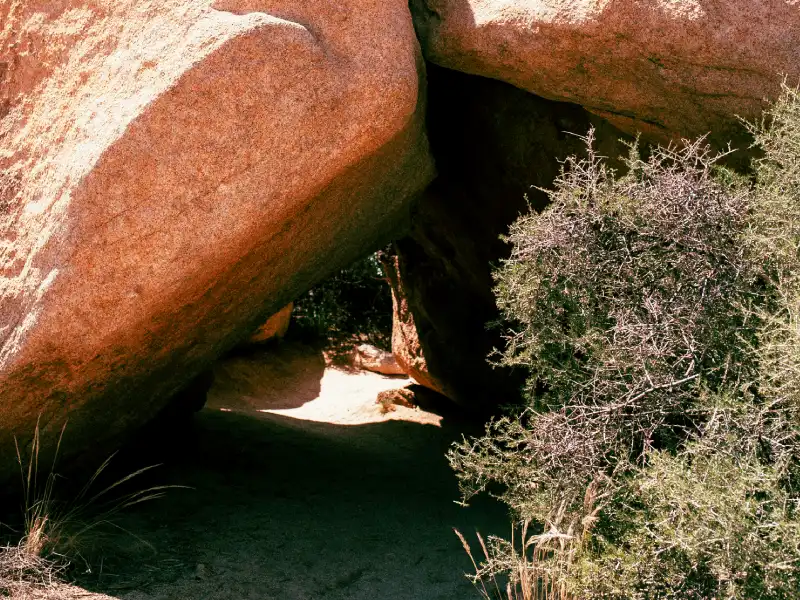
Depressions in the Ground: Low-lying areas or natural depressions can act as temporary shelters. By lying down in a depression, you can protect yourself from wind and reduce exposure to the sun. You can enhance this by using other materials like rocks or vegetation to create a barrier around the depression.
2. Man-Made Shelters
Make your own shelter with a Tarp, Sticks, and Fabric. Here’s how to build each.
Tarp Shelter: If you have a tarp or any kind of large fabric, you can make a simple shelter. Stretch the tarp between two points (like rocks or stakes) to create a sloped roof that provides shade. This type of shelter is lightweight and portable and is a good option if you are on the move.
Lean-To Shelter: If you have a long object like a stick or a pole, you can create a lean-to shelter by placing the stick against a rock or another structure and covering it with cloth, clothes, or other materials. The leaning angle should be away from wind and sun.
A-Frame Shelter: Similar to the lean-to, an A-frame shelter requires two poles or sticks and a tarp or fabric. Arrange the sticks in the shape of A and drape the material over them. This type of shelter provides protection from both sides, which is useful in windy conditions.
3. Improvised Shelters
Improvised shelters are sand or rock piles, desert scrub shelters, or shelters made by digging a trench.
Sand or Rock Pile Shelter: In the absence of trees or large rocks, you can create a shelter by piling sand or rocks to create a barrier. This can be combined with a tarp or other material draped over the top to provide shade. The piles act as insulation and protection from wind.
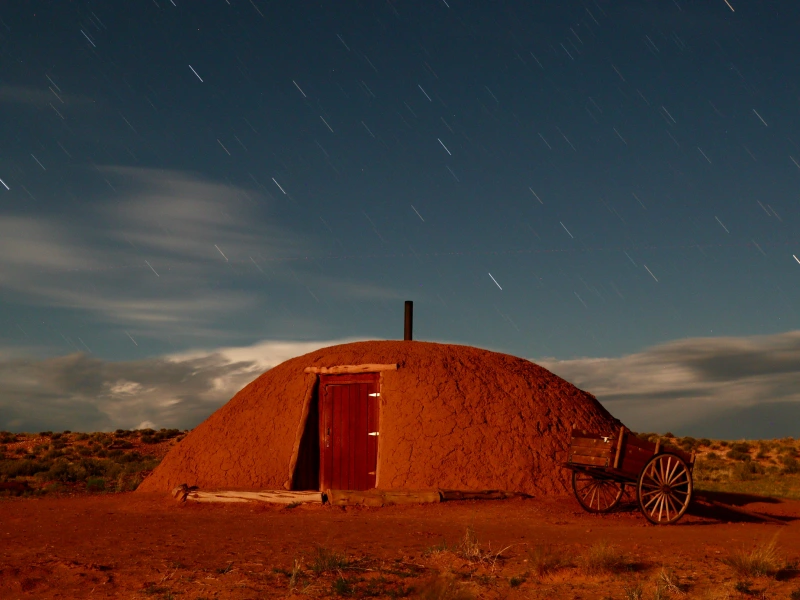
Digging a Trench: In very hot conditions, you can dig a shallow trench in the ground to escape the heat of the sun. The earth beneath the surface is often cooler. You can cover the trench with a tarp or any available material to create a shaded area.
Desert Scrub Shelter: If there is little vegetation, you can use bushes or desert scrub to create a shelter. Bend branches together to form a structure and use other vegetation to fill in gaps. This type of shelter can provide some relief from the sun and wind.
4. Snow Shelters (for Cold Deserts)
Snow Caves are one of the main snow shelters, including Quinzhee, which you can build to take shelter in.
Quinzhee Shelter: In cold desert regions, where there is snow, you can build a Quinzhee. This involves piling snow into a mound, letting it settle, and then hollowing out the inside to create a shelter. A quinzhee provides insulation from the cold and wind.
Snow Cave: If the snow is deep enough, you can dig into a snowbank to create a cave. Snow caves are effective at maintaining a stable internal temperature and protect you from freezing winds.
5. Emergency Shelters
Vehicles if available are among the best shelters you can have in the desert, if not Space Blanket Shelter is another choice.
Vehicle Shelter: If you have access to a vehicle, it can serve as an effective shelter. Vehicles offer shade, protection from the wind, and a more controlled environment. If you stay inside the vehicle, open windows slightly to allow for airflow and prevent overheating.
Space Blanket Shelter: Space blankets (or emergency blankets) are highly reflective and can be used to create a simple shelter. You can drape the blanket over a frame or yourself to reflect sunlight and retain heat during cold nights.
6. Shade Shelters
Use shade shelters such as Bushcraft Shade Shelter and umbrellas to escape the heat.
Bushcraft Shade Shelter: In some cases, creating a shelter is not about full coverage but about creating shade. Using whatever materials are available, such as branches, leaves, or fabric, you can create a shade shelter that reduces exposure to direct sunlight.
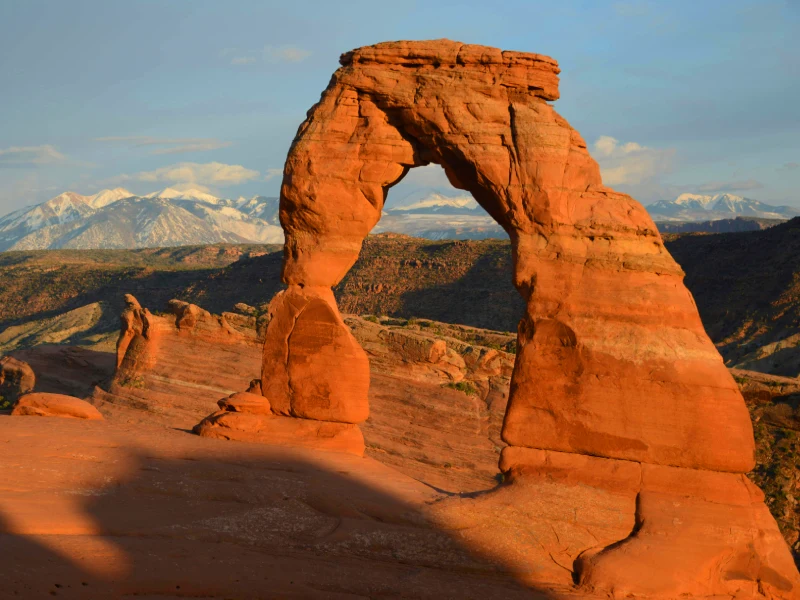
Umbrella Shelter: If you have an umbrella, it can serve as a basic shade shelter. Although it is minimal, it can reduce your direct exposure to the sun, which is very important in a desert environment.
7. Water Shelter (for Rare Rain)
In desert areas prone to flash floods, it is essential to find high ground or build a shelter that protects you from sudden water flow. This type of shelter should be built away from dry riverbeds or depressions where water can quickly accumulate.
8. Windbreaks
Rock walls and vegetation could be great windbreak shelters.
Rock Wall: In areas where wind is a significant issue, you can build a low wall using rocks or other heavy materials to act as a windbreak. This does not provide full coverage but reduces wind exposure and makes it easier to create another shelter behind it.
Vegetation Windbreak: If there is sparse vegetation, use it to your advantage by arranging bushes or scrubs to block the wind. Combining this with another type of shelter can significantly improve your chances of staying safe and comfortable.
9. Oasis Shelter
Palm Leaf Shelters are great oasis shelters. In areas where you might find an oasis, use palm leaves and other plants to construct a shelter. These natural materials are great for providing shade and reducing exposure to the elements.
10. Stone Shelter
If you have time and resources, Cairn Shelter is a great choice. You can build a small stone cairn or hut. Stacking rocks to create walls and using flat stones as a roof can create a rudimentary shelter that protects you from the wind and sun.
How Do People in the Desert Get Shelter?
People in the desert get shelter by using the natural resources available to them and building simple structures to protect themselves from the harsh environment. They might find shade under rocks, caves, or trees, or they might build shelters using materials such as sand, rocks, and branches.
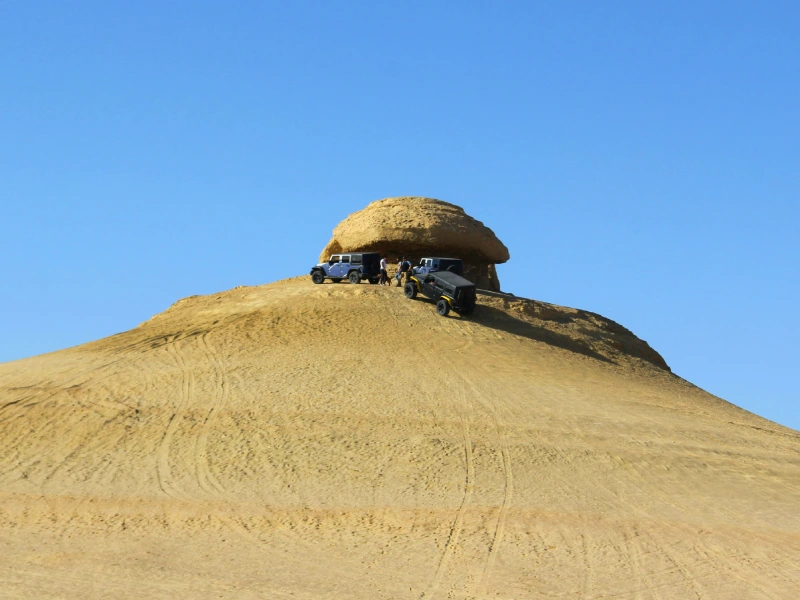
Sometimes, they dig into the ground to stay cool or use cloths like blankets or tarps to create shade. In some cases, they use their vehicles for shelter. The key is to find or create a space that protects them from the sun, wind, and extreme temperatures.
How to Build a Sand Shelter?
To build a sand shelter in the desert, start by finding a spot with loose sand that you can easily dig into. Dig a trench or pit deep enough to sit or lie down in, as the ground is cooler below the surface. Pile the sand you have removed around the edges of the pit to create walls that will block the wind.
If you have any materials like a tarp, cloth, or even branches, place them over the top of the pit to create shade. This simple shelter will protect you from the sun and help keep you cool.
Final Word
In conclusion, having shelter in the desert is crucial for survival, as it protects you from extreme heat, cold, and wind. Knowing how to find or build a shelter can be the difference between life and death in such a harsh environment. Being prepared and understanding basic survival skills is essential, as they can save your life in dire situations. Being equipped with this knowledge helps you stay safe and increases your chances of surviving in the desert if you ever find yourself in an emergency.
Are you planning to travel to Iran and looking for an Iran resort? Consider Matinabad Eco-resort.

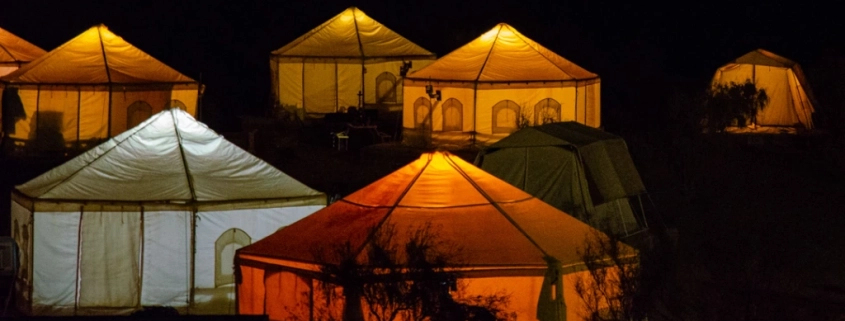



Leave a Reply
Want to join the discussion?Feel free to contribute!